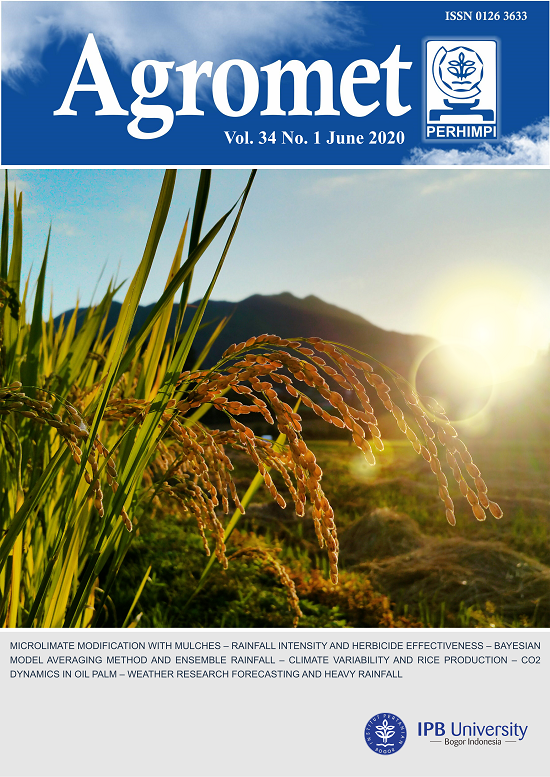Modeling of Heavy Rainfall Triggering Landslide Using WRF Model
Abstract
This study revealed the behavior of heavy rainfall before landslide event based on the Weather Research Forecasting (WRF) model. Simulations were carried out to capture the heavy rainfall patterns on 27 November 2018 in Kulonprogo, Yogyakarta. The modeling was performed with three different planetary boundary layer schemes, namely: Yonsei University (YSU), Sin-Hong (SH) and Bougeault and Lacarrere (BL). Our results indicated that the variation of rainfall distribution were small among schemes. The finding revealed that the model was able to capture the radar’s rainfall pattern. Based on statistical metric, WRF-YSU scheme was the best outperforming to predict a temporal pattern. Further, the study showed a pattern of rainfall development coming from the southern coastal of Java before 13:00 LT (Local Time=WIB=UTC+7) and continued to inland after 13:00 LT. During these periods, the new clouds were developed. Based on our analysis, the cloud formation that generated rainfall started at 10:00 LT, and hit a peak at 13:00 LT. A starting time of cloud generating rainfall may be an early indicator of landslide.

